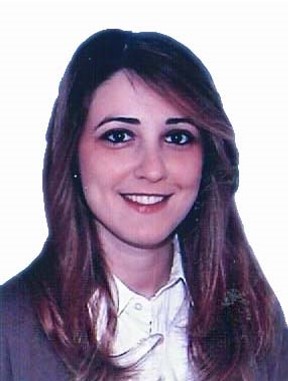Academic qualifications
2012: Ph.D. in Biomedical and Biomechanical Engineering – Interpolythechnic Doctorate School Polytechnic of Bari, Italy
2008: M.S. with honors in Mechanical Engineering -Polytechnic of Bari, Italy
2006: B.S. with honors in Mechanical Engineering -Polytechnic of Bari, Italy
Professional experience
- Principal Investigator A*STAR Skin Research Labs (A*SRL), Singapore. 2026-present
- Principal Investigator. SIgN, A*STAR, Singapore. 2019 – 2025 (adjunct PI 2026-present)
- Adjunct Assistant Professor. NUS, Singapore. 2019 – present
- Research Scientist. SMART, Singapore. 2016 – 2018
- Postdoctoral Associate. SMART, Singapore. 2013 – 2015
- Research Fellow. NUS, Singapore 2012-2013
- Visiting student. Houston Methodist Research Institute, Houston, TX, USA. 2010-2011
Research Interest
- Organ-on-a-chip models
- Immunology and Immunotherapy
- Cancer biology and cancer therapy
- Nanoparticle for drug delivery
Selected Awards & Honours
- 2018 Best Poster Award at the 11th European and Global Summit for Clinical Nanomedicine, Targeted Delivery and Precision Medicine
- 2016 AACR-Bristol-Myers Squibb Oncology Scholar-in-Training Award
- 2016 CREATE Global Connector Program - MIT and EmTech
- 2016 Best Poster Award at the 8th International Singapore Symposium of Immunology
- 2010 PhD Fellowship Interpolytechnic Doctorate School
Membership in Scientific/Professional Organization
- Singaporean Society for Immunology (SgSI)
- IEEE Engineering in Medicine and Biology Society (EMBS)
- European Academy for Tumor Immunology (EATI)
Selected Journal Publications
- Mercurio A, Sharples L, Corbo F, Franchini C, Vacca A, Catalano A, Carocci A, Kamm RD, Pavesi A, Adriani G. Phthalimide Derivative Shows Anti-Angiogenic Activity in a 3D Microfluidic Model and no Teratogenicity in Zebrafish Embryos. Front. Pharmacol. 2019;10:1472–12.
- Bersini S, Miermont A, Pavesi A, Kamm RD, Thiery JP, Moretti M, Adriani G. A combined microfluidic- transcriptomic approach to characterize the extravasation potential of cancer cells. Oncotarget 2018;9:36110-36125.
- Yuan Y, Adriani G, Xu Y, Chan YT. Highly fluorescent, monolithic semiconductor nanorod clusters for ultrasensitive biodetection. ChemComm. 2018;54(80):11352-‑11355.
- Lee SWL, Adriani G, Ceccarello E, Pavesi A, Tan AT, Bertoletti A, Kamm RD, Wong SC. Characterizing the Role of Monocytes in T Cell Cancer Immunotherapy Using a 3D Microfluidic Model. Front. Immunol. 2018 9:416.
- Adriani G, Ma D, Pavesi A, Kamm RD, Goh ELK. A 3D neurovascular microfluidic model consisting of neurons, astrocytes and cerebral endothelial cells as a blood-brain barrier. Lab Chip. 2017;17(3):448-459.
- Pavesi A, Tan AT, Koh S, Chia A, Colombo M, Antonecchia E, Miccolis C, Ceccarello E, Adriani G, Raimondi MT, Kamm RD, Bertoletti A. A 3D microfluidic model for preclinical evaluation of TCR- engineered T cells against solid tumors. JCI Insight. 2017;2(12):e89762.
- Ho YT, Adriani G, Beyer S, Nhan PT, Kamm RD, Kah JCY. A Facile Method to Probe the Vascular Permeability of Nanoparticles in Nanomedicine Applications. Sci Rep. 2017;7(1):707.
- Adriani G, Pavesi A, Tan AT, Bertoletti A, Thiery JP, Kamm RD. Microfluidic models for adoptive cell- mediated cancer immunotherapies. Drug Discovery Today. 2016;21(9):1472-1478.
- Penny HL, Sieow JL, Adriani G, Yeap WH, Ee PSC, San Luis B, Lee B, Lee T, Mak SY, Ho YS, Ong CK, Huang RYJ, Ginhoux F, Rotzschke O, Kamm RD, Wong SC. Warburg metabolism in tumor-conditioned macrophages promotes metastasis in human pancreatic ductal adenocarcinoma. Oncoimmunology.2016;5(8):e1191731.


